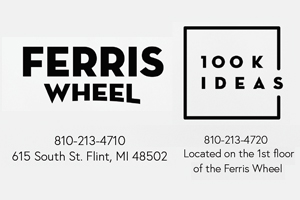Chronic Pain Management
It is estimated that 50 million Americans have chronic pain. According to the Centers for Disease Control and Prevention’s report on the topic released late last year, which equates to about 20 percent of the U.S. adult population. In addition, approximately 20 million of them have “high-impact chronic pain,” which is described as pain so severe that it often limits life or work activities. With increased concerns regarding the addiction of opioid medications, awareness of other available pain management treatment options is gaining momentum.
Eugene Mahon, 73, of Burton, is a chronic pain sufferer who wants to take as little medicine as possible. He has a nerve in his groin area that is acting up. It’s the result of a surgery he had years ago.
“Since I’ve been getting pain blocks, I’ve only had two flair ups and those were due to exertion on my part prior to getting an injection,” said Eugene. “Getting an injection is much more desirable to me than taking medications, especially opioids, or having surgery that may or may not locate the nerve causing the issue. I highly recommend this treatment option.”
Sean Conroy, MD, an anesthesiologist at the McLaren Flint Pain Management Clinic, feels strongly about having open and honest discussions with patients about their pain and the importance of being involved in their own treatment process.
“I find that patients who can keep a positive attitude and are willing to take part in their treatment plan often have better outcomes,” said Dr. Conroy. “The reality is as we age we get aches and pains. We are not going to continue to feel like we did at 15. Being pain-free is not always possible for everyone. I work with my patients to set a functional improvement goal. That could be anything from getting back to work to getting back to walking the dog.”
Dr. Conroy treats patients with chronic pain that has lasted 90 days or more. He often performs nerve blocks for patients like Eugene. These injections are done in a sterile surgical suite with I.V. sedation and the use of imaging. He can use medications too, but also discusses treatment options with patients including physical therapy, Tai Chi, acupuncture and seeing a psychologist, as pain and depression can go together.
“I want to work with patients to improve their mental and physical well-being,” added Dr. Conroy. “Chronic pain is a serious issue. If patients can be open-minded about care beyond only taking medications and be proactive in the treatment process, they can take over their pain instead of it taking over them.”
Dr. Conroy treats patients with the following conditions: all spinal disorders including spinal stenosis, herniated discs, scoliosis, degenerative disc disease, neuropathic pain, joint pain— especially knee, hip and shoulder pain, musculoskeletal pain, and pain
after spinal surgery.
















